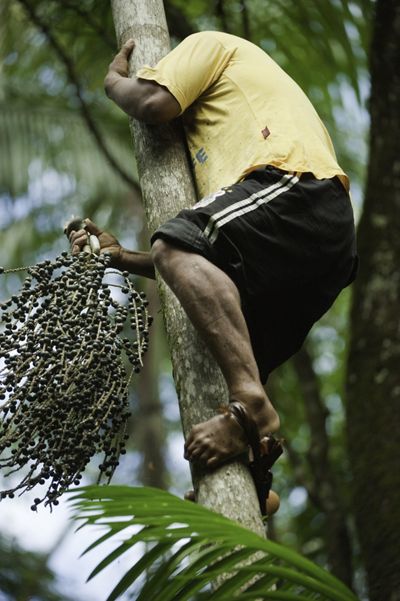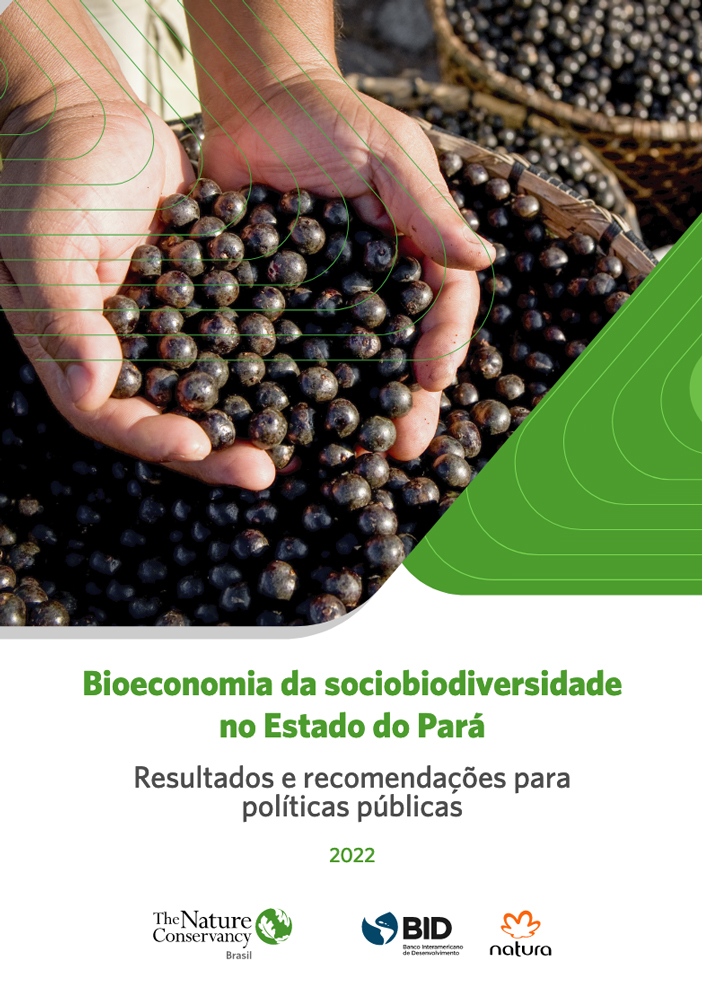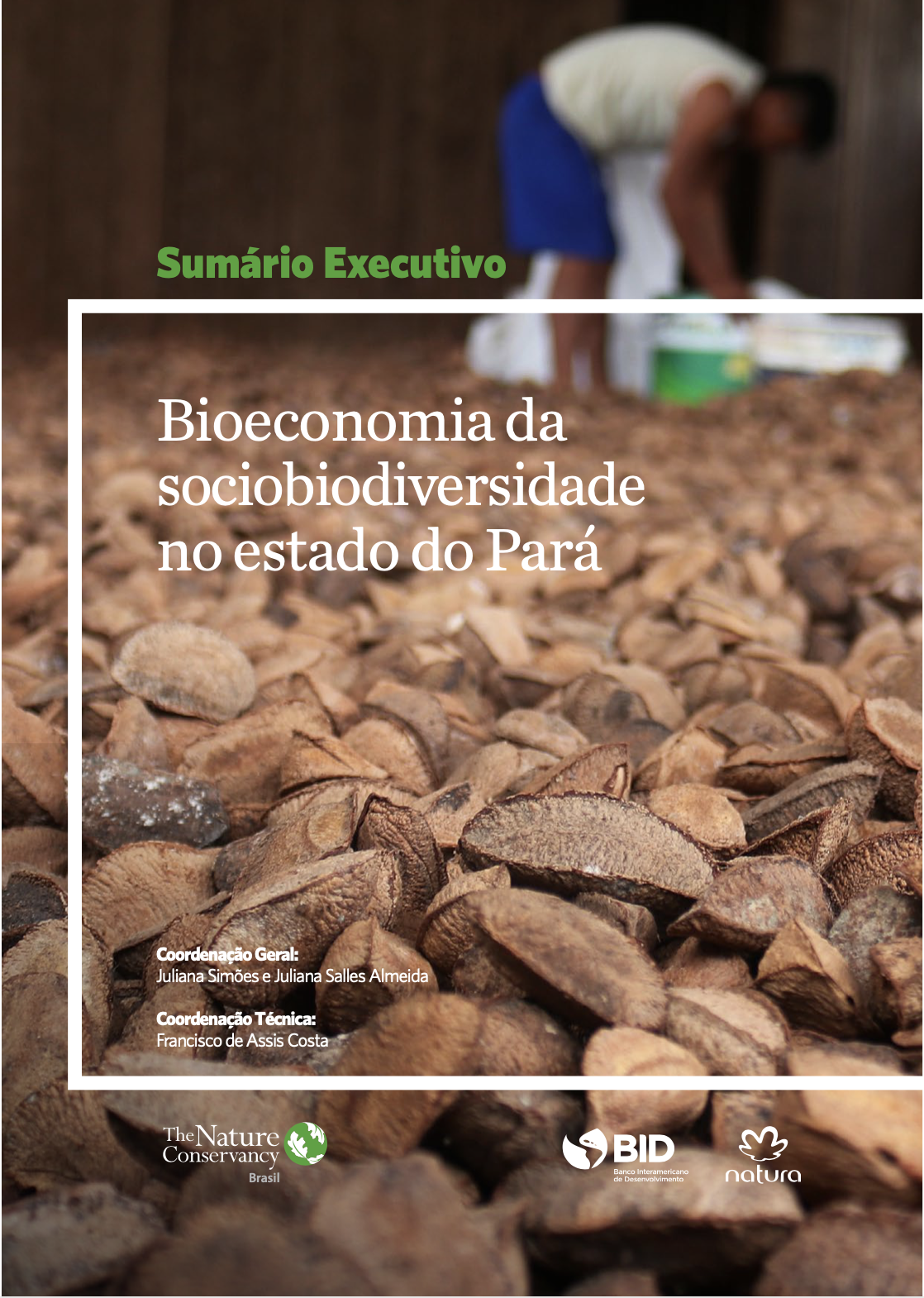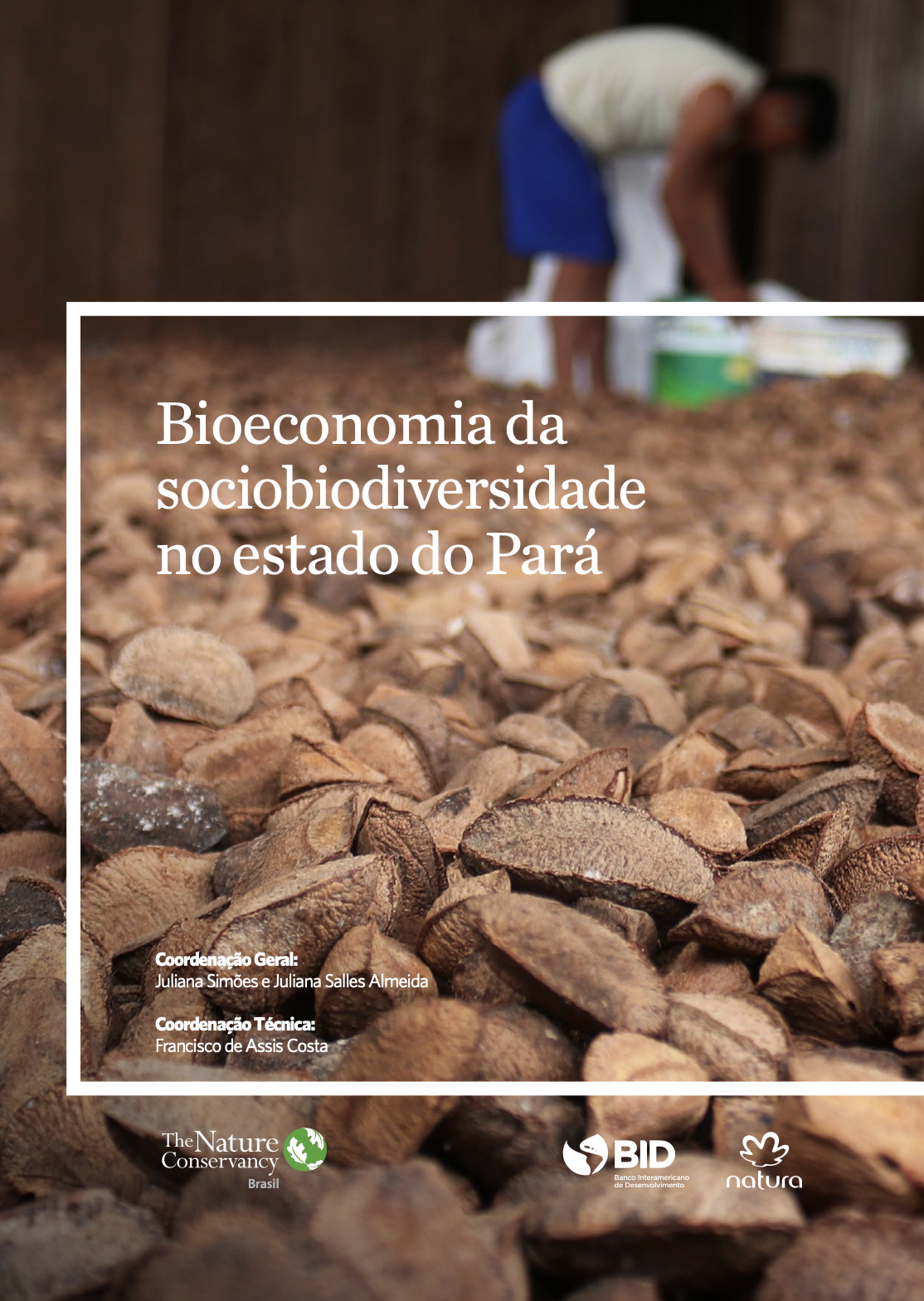The socio-bioeconomy in Pará state, Brazil, has the potential to generate an income of more than US $30 billion in 2040
The estimate is in an unpublished study on the GDP of the socio-bioeconomy production chain in Pará state
Partnership

Conducted by The Nature Conservancy (TNC), in partnership with the Inter-American Development Bank (IDB) and Natura, the study brings unprecedented socioeconomic analyses on the impacts of the socio-biodiversity production chains in the state.
Professor Francisco de Assis Costa, Ph.D. from the Center for Higher Amazonian Studies (NAEA/UFPA), coordinated the research that analyzed thirty socio-biodiversity products from Pará, from production to commercialization. In 2019, those chains generated a GDP of US $970 million. The value is almost three times greater than the official statistics from the Brazilian Institute of Geography and Statistics (IBGE), which indicated a gross production value of US $341 million in the same year as it considered rural production only, the first link in the production chain. In addition, it is estimated that the chains have generated around 224,000 jobs.
Juliana Simões, the deputy manager of the Strategy for Indigenous and Traditional Peoples and Communities at TNC Brazil, believes that that analysis is critical because it looks at the entire chain, closing the production cycle from the initial link, rural production of socio-biodiversity, to the last one, sales of products in the most diverse markets.
"There is great potential for the development of those chains in the state, helping give scale to the commercialization of the products, which can be grown under the premise of sustainable development," she highlights.
Juliana Salles Almeida, a leading specialist at the Inter-American Development Bank, agrees. For her, "this innovative study demonstrates that bioeconomy—based on bioecological principles—is not only an extremely profitable investment for the local economy but also an important element for the conservation of the Amazon rainforest. Keeping the forest standing is the main driving force for income generation and reduction of social inequalities in the Amazon region, and it is one of the pillars of the Bank's 2025 Vision, our guide for the sustainable recovery of the region."
The products that most stood out were açaí, cocoa-almond, Brazil nut, heart of palm, rubber, tucumã, cupuaçu-almond, cumaru, murumuru, and Brazil nut oil. They generated more than 96% of the income, equivalent to over US $ 933 million. The demand for those products comes mainly from the consumer market outside of Pará state.
By projecting future potential economic gains accompanied by appropriate public policies in the next two decades, the study shows that the production chains for açaí, cocoa-almond, chestnut, copaiba, cumaru, andiroba, honey, buriti, cupuaçu, and heart of palm could generate a total of US $ 30.5 billion in 2040. That is an increase of more than thirty times its current value.
Natura has worked for over 20 years with Amazon communities offering technical assistance, technology transfer, management and investment learning, and installing forest Agri industries. The company understands that the valuation of environmental services is also an important source of income that can lead to dealings that positively impact all people.
"We can have a central role in the global sustainability and low-carbon economy, if we choose models compatible with the conservation and regeneration of biomes, innovating with investments in the socio-bioeconomy of standing forests, science and technology, and combining human development and valuing communities and traditional knowledge," explains Denise Hills, Natura &Co's sustainability director for Latin America.
Studies by the United Nations Food and Agriculture Organization (FAO) suggest a global deficit of information on the economy of small rural communities, which generates income for the local population and helps conserve ecosystem services. Thus, the methodology of that study can contribute to other countries, enabling the data of those local products to enter national accounts to foster local public policies.

Inclusion
Juliana Simões also highlights that in addition to mapping the size and potential of the bio-economy, the study contributed to creating inclusive policies that better distribute income within the production chains to adequately remunerate family producers, people, and Indigenous and traditional communities.
"The size of the Amazon forest and the socio-cultural diversity of the traditional peoples of Pará make the state one of the largest exporters of products from the Brazilian socio-bioeconomy. The study sheds light on that economy, highlighting the need to involve traditional communities so that we can have truly inclusive environmental, social, and economic development," Juliana explains.
Quote: Juliana Simões
The potential to develop those chains in the state is great, helping give scale to the commercialization of those products, which can be grown under the premise of sustainable development.

Challenges
The absence of public policies and the advancement of deforestation and forest degradation can harm the development of Pará's socio-bioeconomy. Pará has ranked number one among Amazonian states that most deforest since 2006, being responsible for 47% of the total deforestation in the biome in 2020.
That is why the study also discusses the challenges of and recommendations for developing Pará's socio-bioeconomy successfully and equitably, benefiting all links in the production chains and without harming the environment or traditional peoples. Six main lines of action complement and feed each other:
1) Rural development policies: Technology and Innovation Science (IT), credit, and technical assistance
They must be directed to the needs of family farming based on Agroforestry Systems, aiming at broader and more integrated ecological processes, even if that requires waiting longer for results. Generating income as the socio-biodiversity chains develop ensures more perennial and sustainable results.
2) Development of a continuous value-chain database system of products
Given the gap in official statistics on the different links in the socio-biodiversity value chain and the relevance of those sectors for generating employment and income in the local economy (rural and urban centers), the study suggests developing a continuous database system.
3) Land and territorial policy for common-use areas
Forest products chains, which favor traditional peoples and areas with potential for developing non-timber, are a must. Therefore, priority must be given to land tenure and land-use planning by recognizing the rights of Indigenous Peoples, Quilombolas, and traditional communities.
4) Developing financial mechanisms, such as Payment for Environmental Services (PES)
Institutionalize price-implementation of environmental services via the product-producer PES, linking the environmental services provided to the product and producer in the value chain through forest conservation.
5) Environmental Services Tracking and Certification System
Creating certification seals for environmental services as a complement to the PES economic tool is also recommended. The objective is to verify the product's origin and sustainability, adding value to the chain.
6) Fiscal policy for product-generated income redistribution
Creation of tax incentives for socio-biodiversity products traded within the state of Pará and applying a differentiated rate for interstate sales and exports to other countries, as the products are biome-specific.
Download
Access the document with a summary of results and recommendations for public policies.
DOWNLOAD


